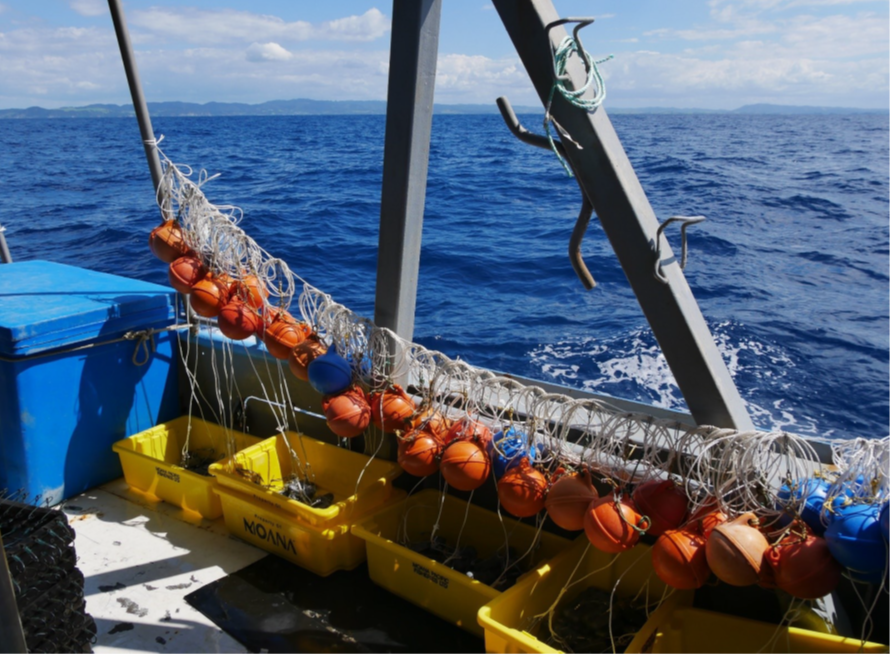u Gear configuration on a New Zealand Snapper longliner; from the publication
Gear configuration on a New Zealand Snapper longliner; from the publication
The Conservation Services Programme (CSP) of New Zealand’s Department of Conservation works to reduce the impact of commercial fishing on protected species in New Zealand fisheries waters. Here is one of its most recent final reports.
The report’s summary follows:
“The introduction of mitigation standards for demersal longliners (MPI, 2019) and subsequent changes to regulation (MPI, 2021) have resulted in increased attention on sink times to depth and the depth of hooks at the end of the aerial extent of tori lines. Previous work has shown that sink times to depth vary with gear setup and position on line, as well as with environmental conditions (Goad et al., 2010; Goad, 2011; Pierre et al., 2013). However, for a given gear setup, times to depth for the slowest sinking part of the line show much less variation within and between sets (Goad, 2021).
The snapper-target demersal longline fleet deploy pre-baited hooks typically on 60 cm snoods. Hooks are stored on cards, usually containing 50 or 60 hooks and are clipped onto the longline during the set, separated by twine stoppers which are regularly spaced along a monofilament nylon backbone. The fleet employs a range of gear setups, and many vessels have faster-sinking variations for use at high-risk times. However, most vessels generally have no accurate measure of depth at the end of the tori line for different gear configurations, and limited time to experiment with variations to gear setup and tori line design to improve depths at the end of the aerial extent.
With a shift towards an outcome-based approach to regulating line weighting it is necessary to better understand sink times to depth for different gear configurations, and to communicate to fishers the options available to meet the prescribed depth at the end of the tori line.”
Reference:
Goad, D. & Olsen Z. 2022. Measuring sink rates of a range of line weighting configurations in the snapper longline fishery. BCBC2021-03 final report prepared by Vita Maris for the New Zealand Department of Conservation, Wellington. 18 pp.
John Cooper, ACAP Information Officer, 05 May 2022

 English
English  Français
Français  Español
Español